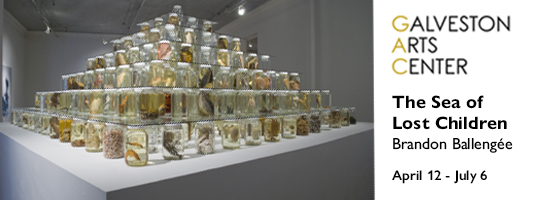Jenelle Esparza’s weavings reflect her South Texas lineage, but also ask what that history might look like from the perspective of the landscape. “If our bodies can record experiences—think about palmistry, scars, and aging,” she explains, “the same goes for the earth. The texture of the soil, snowflakes, mountains and valleys are all narratives of body and earth. I have been thinking a lot about landscapes as witnesses to history and responding to that with abstract weavings.”
Esparza was born in Corpus Christi, has roots in the Rio Grande Valley, and has been living in San Antonio for fifteen years. She began weaving in 2018 during a residency at Artpace and has continued to explore the medium in shows like Vessels at the McNay Art Museum and Sites of Memory through Nov. 5 at DiverseWorks (with Verónice Gaona). “It’s an ancient process that’s in my bloodline. It’s an Indigenous and global practice.”
That ancestral history in Texas is important. Both sides of Esparza’s family picked cotton, which she explains wasn’t unusual because of occupational segregation. Esparza learned to quilt and embroider from her maternal grandmother, who grew up in the cotton fields. “When I read about South Texas history and learned of the violent acts committed against Mexican communities here, I can imagine that my ancestors went through that since we have been here for several generations before borders. Reading about it is a way of connecting to them. I want to tell this story in a non-linear method with fiber and other materials from the era.”
Esparza hopes each piece will be read like a sentence or a paragraph, or like a thought from the perspective of the landscape. “They are abstract representations,” she explains, “as if the landscape were taking a record, or if an event or experience could leave an impression in the land, what would that look like?”

1 ⁄6
Jenelle Esparza, What Grows, 2022 (detail)

2 ⁄6
Jenelle Esparza, Water Rising From the Dirt, 2022 (detail)

3⁄ 6
Jenelle Esparza, I've Stopped Wishing You Back, 2022

4 ⁄6
Jenelle Esparza, Dark Veins Across Texas, 2022 (detail)

5 ⁄6
Jenelle Esparza, Tragic As a Cotton Field, 2022 (detail)

6 ⁄6
Jenelle Esparza, Bodies Swaying Above the Cotton Like Sheets on a Line, 2022 (detail)
Esparza also uses weaving to recall untold stories. “This state has a way of controlling its historical narrative that leaves so much out,” she says. “Texas has banned more books than any other state. There are so many experiences, especially those of people of color, that are unaccounted for. Our stories are kept alive in other ways as an act of resistance.”
Esparza is carrying on that tradition, visualizing history from the perspective of the landscape. Through the ancient art of weaving, she threads together our often troubled pasts and asks, what was left behind?
—EMILY HYNDS




